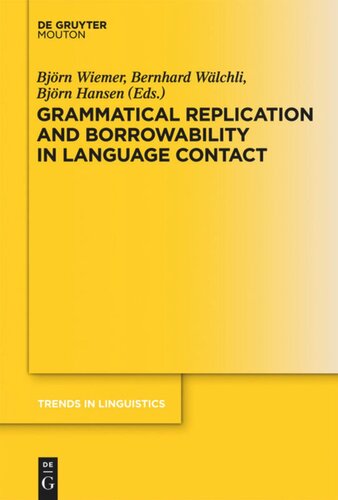

Most ebook files are in PDF format, so you can easily read them using various software such as Foxit Reader or directly on the Google Chrome browser.
Some ebook files are released by publishers in other formats such as .awz, .mobi, .epub, .fb2, etc. You may need to install specific software to read these formats on mobile/PC, such as Calibre.
Please read the tutorial at this link: https://ebookbell.com/faq
We offer FREE conversion to the popular formats you request; however, this may take some time. Therefore, right after payment, please email us, and we will try to provide the service as quickly as possible.
For some exceptional file formats or broken links (if any), please refrain from opening any disputes. Instead, email us first, and we will try to assist within a maximum of 6 hours.
EbookBell Team

4.0
36 reviewsThe volume presents new insights into two basic theoretical issues hotly debated in recent work on grammaticalization and language contact: grammatical replication and grammatical borrowability. The key issues are: How can grammatical replication be distinguished from other, superficially similar processes of contact-induced linguistic change, and under what conditions does it take place? Are there grammatical morphemes or constructions that are more easily borrowed than others, and how can language contact account for areal biases in the borrowing (vs. calquing) of grammatical formatives? The book is a major contribution to the ongoing theoretical discussion concerning the relationship between grammaticalization and language contact on a broad empirical basis.